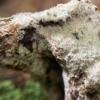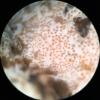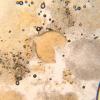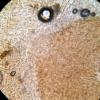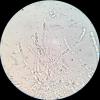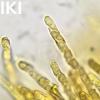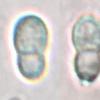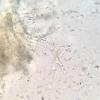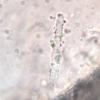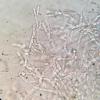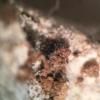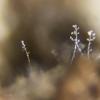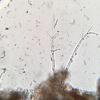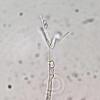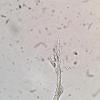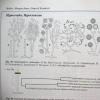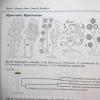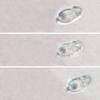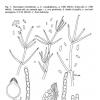
04-11-2025 09:07
Hello.A suspected Hymenoscyphus sprouting on a thi

04-11-2025 12:43
 Edvin Johannesen
Edvin Johannesen
Hi! One more found on old Populus tremula log in O

03-11-2025 21:34
 Edvin Johannesen
Edvin Johannesen
These tiny (0.4-0.5 mm diam.), whitish, short-stip

28-10-2025 15:37
Carl FarmerI'd be grateful for any suggestions for this strik

03-11-2025 16:30
 Hans-Otto Baral
Hans-Otto Baral
Hello I want to ask you if you have found this ye

28-10-2025 19:33
 Nicolas Suberbielle
Nicolas Suberbielle
Bonjour à tous,Je voudrais votre avis sur cette r

31-10-2025 09:19
 Lothar Krieglsteiner
Lothar Krieglsteiner
Can somebody provide me with a file of:Rogerson CT
Nectriopsis ? on gilled mushroom
Ethan Crenson,
06-08-2024 23:10
Hi all,
In NYC I found this mushroom engulfed by the perithecia of a Nectrioid asco. The mushroom seemed to be growing from wood, so I assume it to be some kind of saprobe. The emerging tops of the perithecia are a light orangeish-brown embedded in a white hairy subiculum. At first I thought that this could be Nectriopsis oropensoides. But unfortunately the microscopy does not fit.
Spores are 1-septate, the two cells are (mostly) unequal in size, 5.4-8.3 x 2.8-3.5µm. I cannot detect any ornamentation, *perhaps* they are very faintly spinulose (it may be my imagination). In lacto phenol cotton blue the loose spores are not cyanophilous. Asci are IKI-. Spores are uniseriate in the asci.
The hairs are encrusted and septate. Among the hairs I detected what might be conidia, which are aseptate and hyaline (last photo).
Any ideas?
Thank you in advance.
Ethan
Jacques Fournier,
07-08-2024 15:24

Re : Nectriopsis ? on gilled mushroom
Hi Ethan,
no idea but assigning your fungus to a genus requires to know the asexual morph. Gliocladum, acremonium etc..?
You may rather find it at the margin of the colony, otherwise a culture would be better.
Gliocladium would point toward Sphaerostillbella but no species fits.
More data on the identity of he host might also be helpfuL
Your description is accurate but lacks the key feature of the reaction of the perithecial wall to 3% KOH, which should be routinely implemented when dealing with Hypocreales.
Good luck!
Jacques
no idea but assigning your fungus to a genus requires to know the asexual morph. Gliocladum, acremonium etc..?
You may rather find it at the margin of the colony, otherwise a culture would be better.
Gliocladium would point toward Sphaerostillbella but no species fits.
More data on the identity of he host might also be helpfuL
Your description is accurate but lacks the key feature of the reaction of the perithecial wall to 3% KOH, which should be routinely implemented when dealing with Hypocreales.
Good luck!
Jacques
Ethan Crenson,
07-08-2024 16:07
Re : Nectriopsis ? on gilled mushroom
Hello Jacques,
Nice to hear from you. Thank you for your helpful comments. I forgot to include the KOH information: No response in 3% KOH. But as you said, the asexual morph is key. I will keep try to find it or culture it.
Ethan
Ethan Crenson,
07-08-2024 17:57
Jacques Fournier,
07-08-2024 19:53

Re : Nectriopsis ? on gilled mushroom
indeed your images are not suggestive of Gliocladium.
I attach a figure from The genera of Hyphomycetes CBS 2011 showing anamorphs of Hypocreaceae.
Cladobotryum is more like what you illustrate, but its conidia are septate.
Sorry, I cannot help you any further.Chhers,
Jacques
I attach a figure from The genera of Hyphomycetes CBS 2011 showing anamorphs of Hypocreaceae.
Cladobotryum is more like what you illustrate, but its conidia are septate.
Sorry, I cannot help you any further.Chhers,
Jacques
Jacques Fournier,
07-08-2024 19:53

Re : Nectriopsis ? on gilled mushroom
indeed your images are not suggestive of Gliocladium.
I attach a figure from The genera of Hyphomycetes CBS 2011 showing anamorphs of Hypocreaceae.
Cladobotryum is more like what you illustrate, but its conidia are septate.
Sorry, I cannot help you any further.Chhers,
Jacques
I attach a figure from The genera of Hyphomycetes CBS 2011 showing anamorphs of Hypocreaceae.
Cladobotryum is more like what you illustrate, but its conidia are septate.
Sorry, I cannot help you any further.Chhers,
Jacques
Ethan Crenson,
07-08-2024 21:23
Re : Nectriopsis ? on gilled mushroom
Jacques thank you so much! That is a giant help! I will have a much more careful look at the conidia. I will also try to sequence this collection. Perhaps I will have more to report.
Jacques Fournier,
07-08-2024 22:05

Re : Nectriopsis ? on gilled mushroom
Ethan, sequencing should proove very useful.
I am looking forward to hearing from the results of your investigations.
Cheers,
Jacques
I am looking forward to hearing from the results of your investigations.
Cheers,
Jacques
Ethan Crenson,
23-11-2024 19:03
Re : Nectriopsis ? on gilled mushroom
Here is an update about this collection from Staten Island, NYC of the fungicolous nectrioid asco. Remarkably, I obtained a very good sequence without contamination from the host on the first try. It blasts to a high similarity to a sequence of Nectriopsis tremellicola (CBS_437.81a) which is cited as Hypomyces tremellicola in Zare, R., Gams, W. More white verticillium-like anamorphs with erect conidiophores. Mycol Progress 15, 993–1030 (2016).
Take all of this with a grain of salt as my experience interpreting ITS sequences is beginner at best.
My original microphotos of spores are probably misleading since they do not show any texture. Perhaps the spores were immature, or more likely, my equipment and photography were insufficient. Today I looked again and found that I could detect a spinulose texture with effort (see my photo).
I think that the photos I made last August of the conidiophores are consistent with the illustration for Nectriopsis tremellicola in Gams 1981 below.
From a quick search it seems that N. tremellicola is represented in herbaria only from collections in the US, Canada, Mexico, Argentina. I see one collection from South Africa. A recent paper describes a collection from China. Is it not present it Europe?
Jacques Fournier,
23-11-2024 19:36

Re : Nectriopsis ? on gilled mushroom
Hi Ethan, you did great!
DNA sequencing is very helpful here.
Sure that imaging anamorphs to make them identifiable is easier when performed from a culture than from a colony on the host, which may often be immature or overmature and degraded, thus difficult to interpret.
Good luck with the next ones!
Jacques
DNA sequencing is very helpful here.
Sure that imaging anamorphs to make them identifiable is easier when performed from a culture than from a colony on the host, which may often be immature or overmature and degraded, thus difficult to interpret.
Good luck with the next ones!
Jacques


